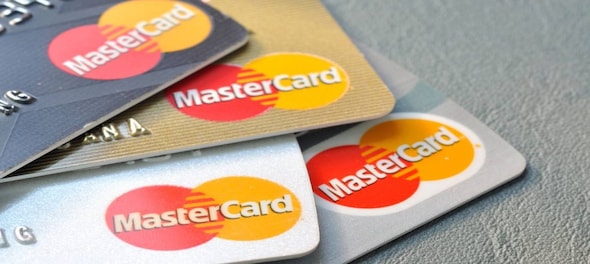
Mastercard CEO, Michael Miebach, said that he does not expect SWIFT, one of the most widely used cross-border payments services, to exist after five years. His comment was part of a panel discussion held on Tuesday at the Global Blockchain Business Council’s (GBBC) Blockchain Central Davos Conference in Switzerland.
To conclude the panel discussion, the moderator asked each panellist whether SWIFT would still be around after five years. The panel included Jennifer Lassiter, executive director of the Digital Dollar Project, David Treat, a director at Accenture and co-founder of the Digital Dollar Project, Jon Frost, senior economist at the Bank of International Settlements and Yuval Rooz, the CEO of Digital Asset.
Considering its stature and importance in the global payments network, every other panel member responded positively, barring Miebach, who responded ‘no’. His answer astounded the group of executives attending the blockchain conference, which is running parallel to the World Economic Forum.
Also read:
SWIFT stands for Society for Worldwide Interbank Financial Telecommunication and is a financial payments protocol that facilitates cross-border payments. It is worth noting that SWIFT is not completely a payments facilitator but a messaging system which transfers payment instructions.
It does not actually send money from one bank to another. It simply notifies one bank to credit/debit another bank account through encrypted messages.
Let’s say you want to send money to a friend in the US. While filling out the money transfer request, you would have to enter the Bank Identifier Code (BIC) of your friend’s bank, his account number, the amount you want to transfer, etc. Once you hit send, the money is debited from your account.
Now, what SWIFT does is, it simply encrypts the details of your payment and sends it over to the recipient’s bank. Now, your friend’s bank is notified of an incoming payment request, so it credits your friend’s account. Of course, this only happens after the funds bounce around from one bank to another until they reach your friend’s bank account. And then voila, the money has been transferred.
According to the official website, SWIFT harnesses a network of 11,000 financial institutions spread across two hundred countries to process over forty-six million transactions daily. It is widely used by central banks, corporates, financial institutions, and custodians to make payments and settle trades. This is precisely why Miebach’s answer came as a surprise to those attending the panel discussion.
However, soon after the comment, Mastercard released a statement via e-mail which read, “Let us clarify the intent of the on-stage comment, as it’s not as simple as a yes or no answer. Michael was simply reinforcing what SWIFT has previously said — their operations continue to evolve. Its current form will not be the same in the future. They are adding more functionality and moving past just being a messaging system.”
SWIFT plans to leverage the capabilities of CBDCs to improve upon its offerings. CBDCs are gaining traction as cryptocurrencies have been at the receiving end of several central banks and governments. Many nations consider cryptocurrencies unfavourable due to their decentralised nature and the potential malfeasance that may follow. Hence, countries and central banks view CBDCs as the next best alternative.
One may argue that CBDCs shall be designed to simplify the role of a sovereign currency within a nation’s borders. It is also possible that all CBDCs may not be built upon the same technology. In such a case, how will SWIFT unify multiple CBDCs? Several questions have been raised since the digital form of fiat currencies became the talk of the town.
Well, SWIFT has been tinkering with CBDCs since 2021. The messaging platform believes that linking various CBDCs is the key to unlocking their true potential, and it could significantly simplify cross-border payments.
In their experiments, they were successfully able to execute a cross-border transaction between a CBDC network and the traditionally used RTGS (Real-Time Gross Settlement) system. On 19th May 2022, SWIFT announced on Twitter, its collaboration with French IT firm Capgemini to build interlinking systems that would enable such payment combinations. According to its official blog post, three use cases are being worked on - “CBDC to CBDC, CBDC to fiat, and fiat to CBDC. “
“Navigating decentralisation is complex with many technology choices, operating models, and policy considerations. Our well-defined taxonomy has helped us accelerate our efforts to build CBDC interlinks with SWIFT,” wrote Sudhir Pai, Chief Technology & Innovation Officer, Financial Services at Capgemini. “We look forward to continue to collaborate in building industry standards and frameworks with SWIFT,” he added.
Also read: How do crypto cross-border payments work?
Check out our in-depth Market Coverage, Business News & get real-time Stock Market Updates on CNBC-TV18. Also, Watch our channels CNBC-TV18, CNBC Awaaz and CNBC Bajar Live on-the-go!


Supreme Court dismisses plea seeking postponement of CA exams; details here
Apr 29, 2024 2:29 PM
Just 8% women candidates contested first two phases of Lok Sabha polls
Apr 29, 2024 12:00 PM
The sexual assault case against Prajwal Revanna — here's what we know so far
Apr 29, 2024 11:36 AM
Repolling underway at one polling booth in Chamarajanagar LS segment in Karnataka
Apr 29, 2024 10:32 AM

